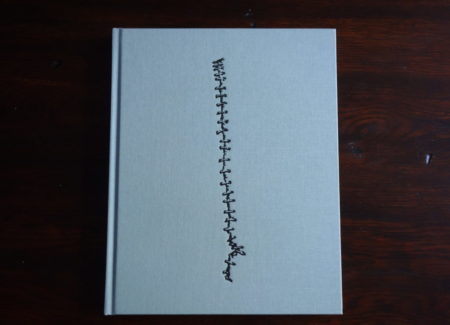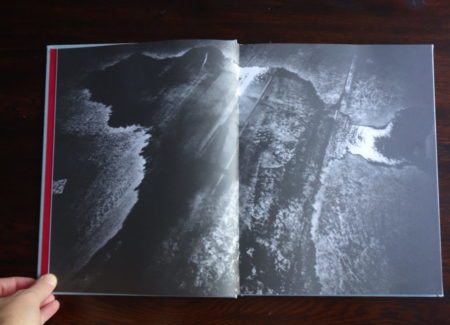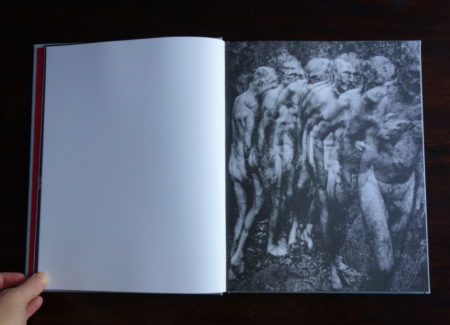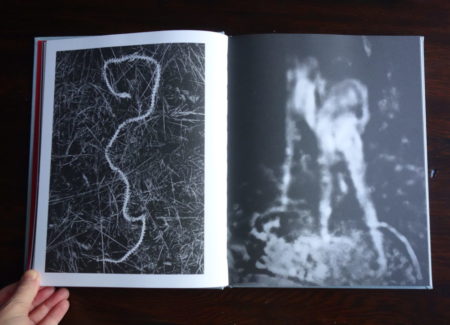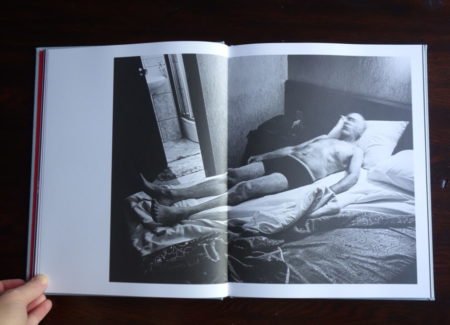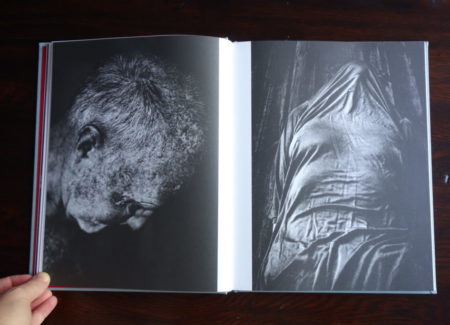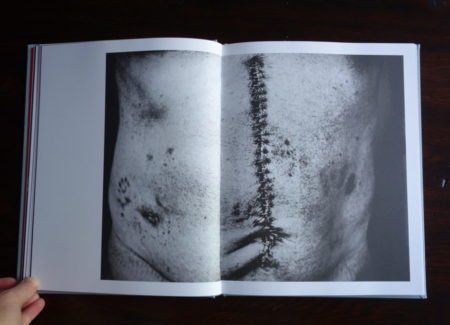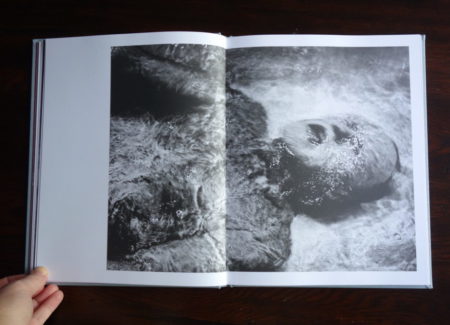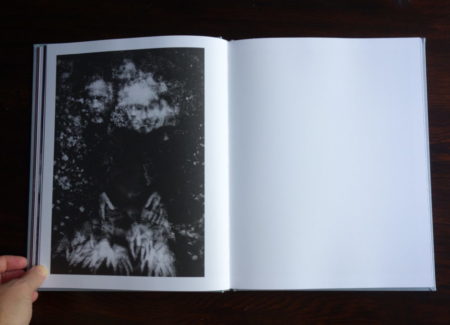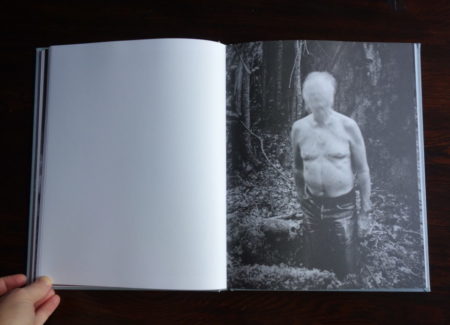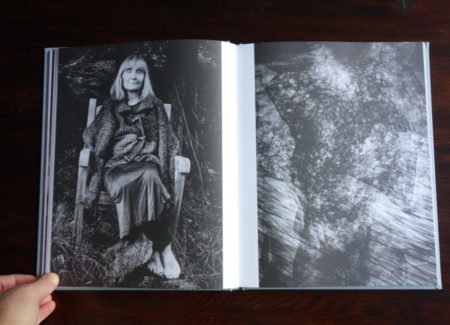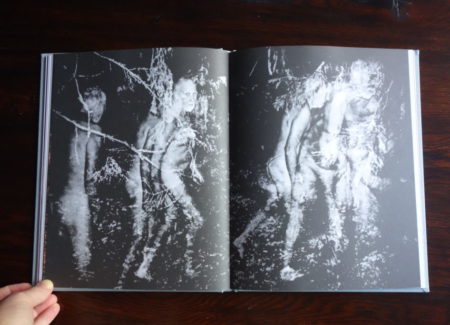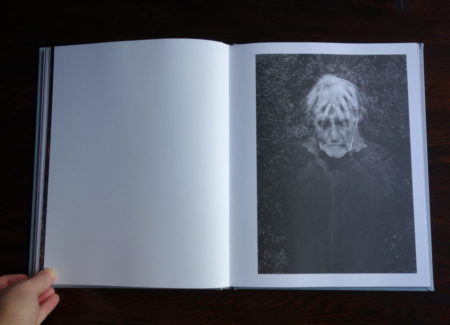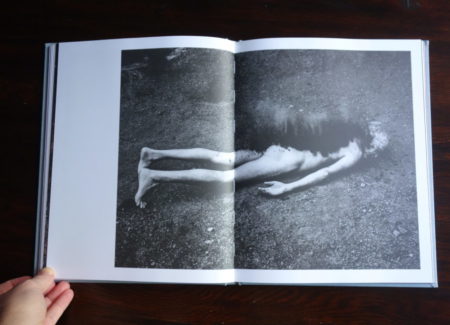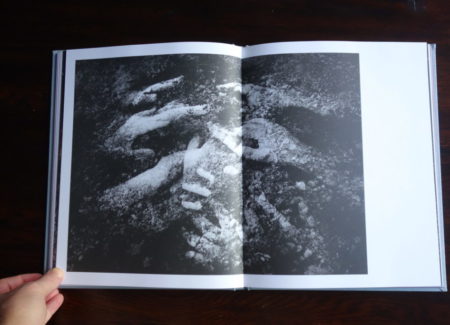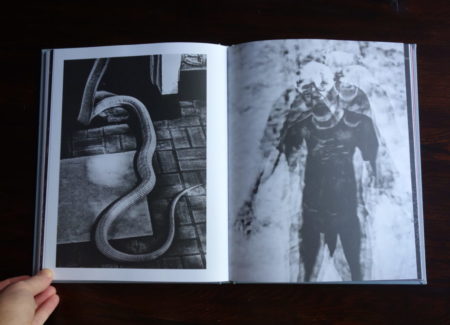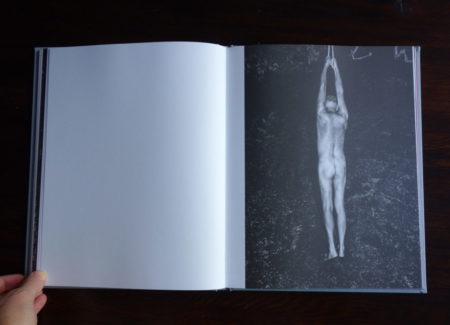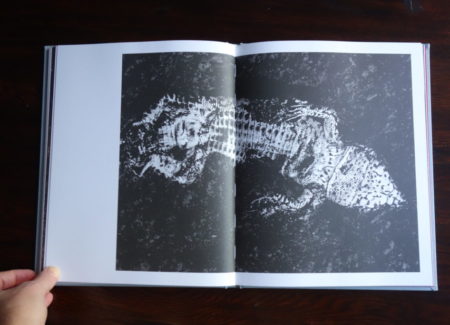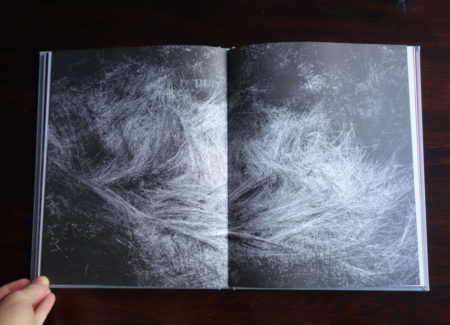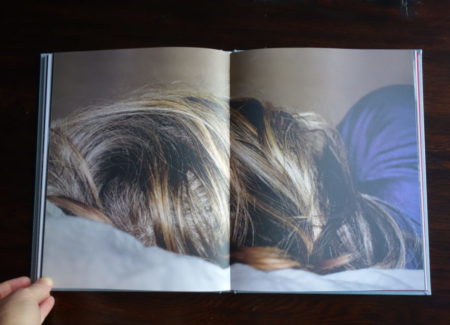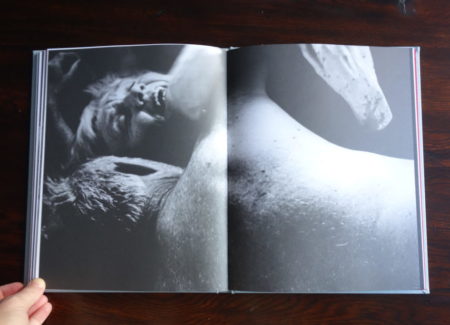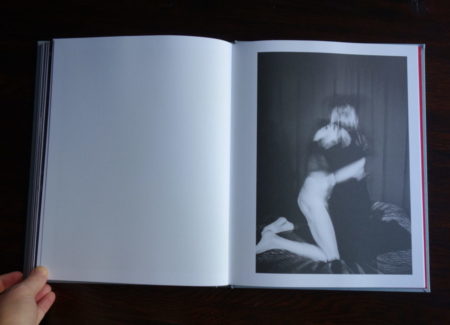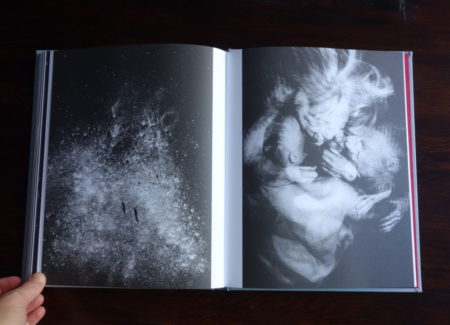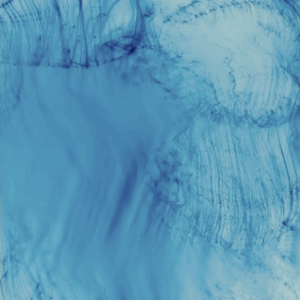JTF (just the facts): Published in 2017 by Bœcker Books (here). Hardcover, 96 pages, with 48 black and white/color illustrations. Includes a poem by Bob Hansson and a short introduction by the artist. In an edition of 500 copies. (Cover and spread shots below.)
Comments/Context: There are several shopworn clichés that typically accompany the man who has just been notified that he has an incurable disease and only a short time to live. There is the “live life to the fullest” and catch up on the remaining bucket list items narrative, with exotic travel and sky diving placed at the top of the to do list, without much regard to personal risk or bodily harm, given the circumstances. And there is the “get your affairs in order” story line, full of meetings and goodbyes with distant family members, old friends, unresolved estrangements, and tax lawyers.
But these last minute escapades and mundane practicalities entirely overlook the wrenching emotional trauma of coming to terms with the idea that death stands nearby, especially if the terminal diagnosis comes as something of a surprise. And if Leif Sandberg’s powerful photobook Ending is any guide, it is an intensely personal process of refection and self-recognition, full of anguish of both the mind and body.
The trials and tribulations of the aging male have not been a subject that many photographers have chosen to explore. Of course, we have seen countless stoic portraits of weathered elders across generations and geographies, but few projects have gone beyond the surfaces of these masculine ideals. Two notable exceptions to this general rule have been John Coplans’ unflinching nude portraits of his own aging body (the wrinkled skin and sagging, hairy body parts often enlarged to cover an entire wall), and Sally Mann’s sensitive portraits of her husband Larry (gathered under the title Proud Flesh), where his atrophying muscles were artfully mixed with the expressive chemical splashes of her antique process. But in both cases, the psychology of these men was only alluded to indirectly, via their poses and gestures – we never really get inside the inner workings of their aging male minds.
The bravery to be found in Sandberg’s photographs starts with the simple admission that the stiff upper lip exterior we expect from men in this situation masks a roiling maelstrom of emotions, including among others, outright panic, fear, and unrelenting anxiety. Liberally using multiple exposures, blur, and other manipulations, Sandberg has gone beyond the literal in his images and deliberately moved into the realm of the metaphorical, where his expressive compositions act like stand-ins for his various emotional states. He has also interleaved images of decaying interiors and rotted, stained architecture, using them as foils for his portraits, scarred places to go with his scarred body.
Each self-portrait illustrates a different facet of the harrowing experience. We see him drowning under a deluge of water (screaming open mouthed as it occurs) and suffocating under a silk sheet. In several images, he seems to leave his body, wandering like a naked ghost or multiplying out into copies of himself that become jumbled and intermingled as they dissolve into the surroundings. In others, he is being buried (alive) by dark dirt like a corpse and hangs from a rope like a side of meat.
A shedding of skin metaphor is evoked by various high contrast images of snakes and reptiles, his wrinkles not unlike their interlocked scales. And an erasure theme also recurs, with faces rubbed out by blur and his whole body disappearing into nothingness. Finally, in many pictures, Sandberg grasps and tears at his own body (sometimes with more than one set of hands), the waiting and wandering given a deep sense of anguish.
The only balance to this intense parade of emotional trauma is the presence of Sandberg’s partner. While she too is aging, and suffers from moments of erasure (or forgetting?), she provides a calming influence on the process. He tenderly observes her hair while she sleeps, examines the contours of her face, and relishes the joy of her touch. In the latter half of the photobook, she provides a source of quiet comfort, standing by him as he lashes out at the darkness and embracing him with care and concern in his moments of weakness.
Sandberg has studied with both Anders Petersen and JH Engström, and hints of their respective styles have crept into his own aesthetic. From Petersen, he has drawn a mood of psychological darkness, where grainy textures and up-close rawness give the pictures some of their jolt. And from Engström, he has allowed vulnerability and intimacy into his vocabulary, finding comfort in the nudity of his own body and the expressionistic blurs of indistinct detail. But Sandberg has incorporated their learnings into his own distinct style in such a way that the images don’t feel directly derivative – we can see the linkages, but Sandberg’s voice is authentically his own, his struggles all too real to be borrowed from anyone else.
In many ways, this photobook feels like a therapeutic exercise. By naming his demons, Sandberg has perhaps made them more manageable, allowing the process to come full circle toward a kind a catharsis. At the end of the book, white spackled paint explodes out into a galaxy of dust and Sandberg is left in the lovingly knotted embrace of his partner, their relationship having weathered the storm so to speak. Whatever the final outcome may ultimately be, Sandberg has courageously shown us the honest undulations of his mind, and that baring of the soul is both impassioned and exhausting, leaving us in a meditative place of resignation and calm.
Collector’s POV: Leif Sandberg does not appear to have gallery representation at this time. As such, direct contact with the artist via his website (linked in the sidebar) is likely the best option for those collectors interested in following up.
